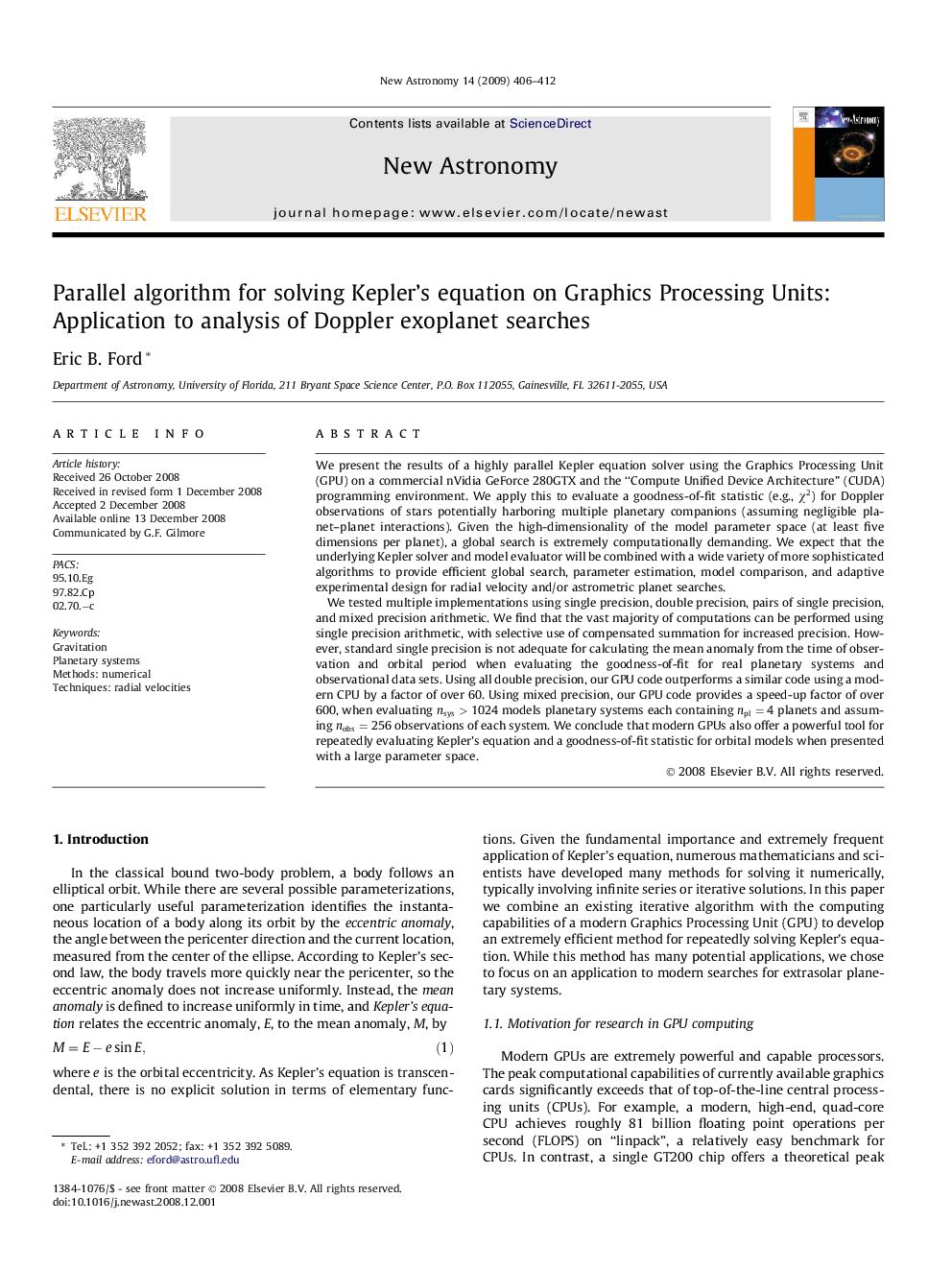| Article ID | Journal | Published Year | Pages | File Type |
|---|---|---|---|---|
| 1779182 | New Astronomy | 2009 | 7 Pages |
Abstract
We tested multiple implementations using single precision, double precision, pairs of single precision, and mixed precision arithmetic. We find that the vast majority of computations can be performed using single precision arithmetic, with selective use of compensated summation for increased precision. However, standard single precision is not adequate for calculating the mean anomaly from the time of observation and orbital period when evaluating the goodness-of-fit for real planetary systems and observational data sets. Using all double precision, our GPU code outperforms a similar code using a modern CPU by a factor of over 60. Using mixed precision, our GPU code provides a speed-up factor of over 600, when evaluating nsys>1024 models planetary systems each containing npl=4 planets and assuming nobs=256 observations of each system. We conclude that modern GPUs also offer a powerful tool for repeatedly evaluating Kepler's equation and a goodness-of-fit statistic for orbital models when presented with a large parameter space.
Keywords
Related Topics
Physical Sciences and Engineering
Physics and Astronomy
Astronomy and Astrophysics
Authors
Eric B. Ford,
